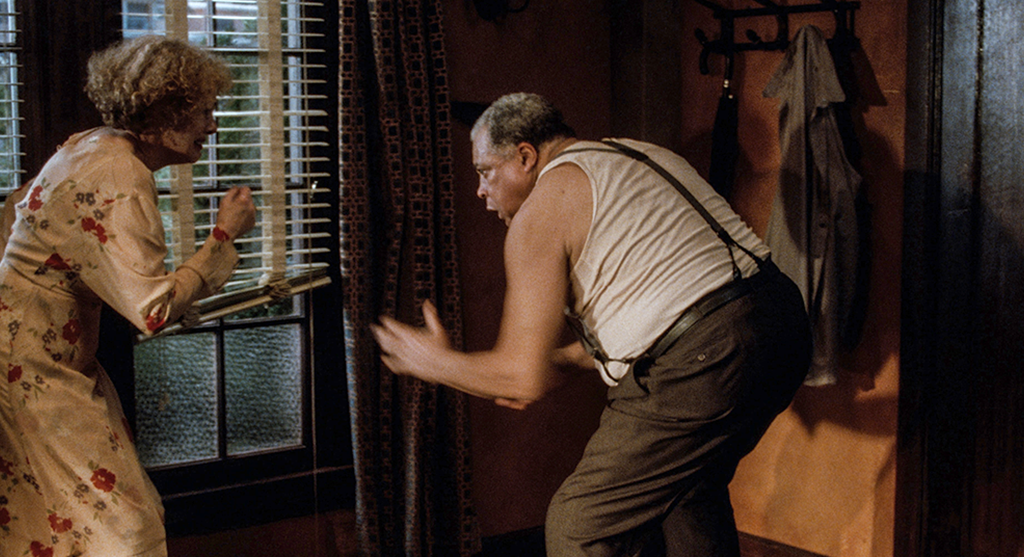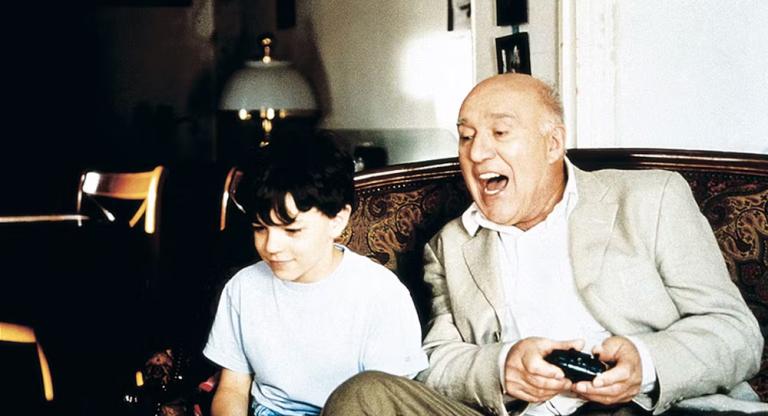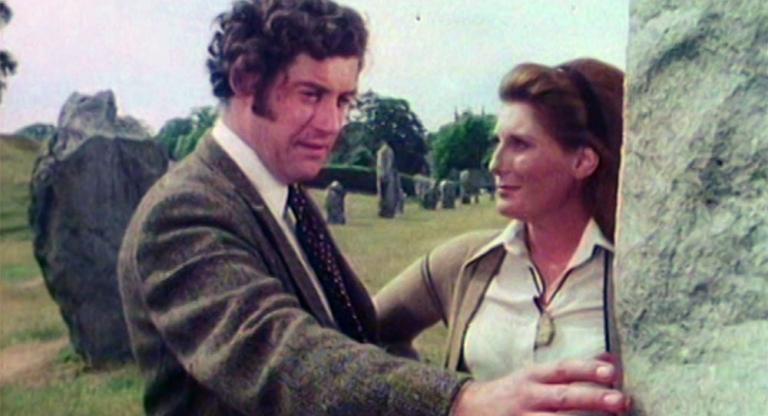There is an invisible, inaudible, imaginary demon in Charles Burnett’s The Annihilation of Fish (1999) who goes by the name of Hank. For his naughty deeds, like looking up women’s skirts, he is frequently wrestled to the ground and thrown out the nearest window by Fish (James Earl Jones), the elderly Jamaican immigrant he has been tormenting for years. Fish lives alone in Los Angeles, in a Victorian boarding house run by Mrs. Muldroone (Margot Kidder), an aging widow who waters her garden’s weeds. Poinsettia (Lynn Redgrave), another elderly woman, moves into the room opposite Fish. Unable to marry her lover, the 19th century composer Giacomo Puccini, because he is dead, Poinsettia courts grief. In between his wrestling matches with Hank, Fish chats up Poinsettia, loosening her torpor, and the two start to fall in love.
The Annihilation of Fish is an unashamedly weird film, and its weirdness is an invitation to faith. Conventional Hollywood wisdom would never place old, lonely, grief-stricken, mentally unwell characters at the center of a whimsical rom-com. But Burnett does, because he has faith that they can supply each other’s happiness, that they will find in each other their reasons for living, and so they do. One night, during a date with Poinsettia, Fish tells the story of a railroad worker who withered away and died when the rail shut down, having lost his purpose in life: “A man’s heart has got to have a reason to pump, even if it’s down to counting two trains a day.” As Fish and Poinsettia grow closer, and as Mrs. Muldroone observes their budding romance, they all learn to accept each other’s esoteric beliefs and erratic behaviors not primarily as liabilities, but—to rephrase Emily Dickinson—as strange inventions of hope.
It is through this faith that the audience learns to take Hank’s being in the world as seriously as Fish does. Every time Fish defenestrates Hank from the second-story room where they tussle, Burnett always makes sure to shake the tree he lands on below. Hank is not a throwaway gag, he is a major driving force in the plot. Fish, who has embraced Hank as somewhat of a frenemy, has to choose between maintaining him as a sparring partner or spending more time with Poinsettia, who Hank grows jealous of. When Hank and Fish fight, the camera perspective sometimes switches to a first-person point-of-view, placing us in Hank’s shoes. Perhaps the demon is the cinematic apparatus itself, which gives these characters an existence even as it assaults them, demanding their defeat, their resignation to a dominant narrative in which they cannot succeed or achieve fulfillment.
Interestingly, a first-person perspective that casts the camera as an obtrusive and/or malevolent force shows up in some of Burnett’s other LA-set films from the ‘90s. When It Rains (1995), a movie about improvising in life as in jazz, opens with a montage of people confronting the camera, asking not to be filmed. Babu, the film’s leading man, comments on their refusals: “Obviously they don’t want their pictures taken. You be trying to steal their soul. They going to need every bit for the year 2000.” The Final Insult (1997), a movie about glimpsing beauty in a world that takes everything from you, contains a scene where a homeless man complains to the camera that the city did a street sweep in preparation for the film shoot. Unlike The Annihilation of Fish, these films are docu-fictional, and it is unclear to what extent they are staged. Yet all three films show Burnett working through the challenge of representing vulnerable members of society, and his penchant for capturing the vibrance of multicultural Los Angeles, a city of dashed dreams and low-key miracles.
It’s a miracle that we can see The Annihilation of Fish. Milestone’s press kit for the film contains a detailed 20-page essay on the film’s production and the Herculean, decades-long struggle to release it after one uncharitable early review in Variety caused distributors to back out. I recommend you read it—I dare not attempt to summarize it—but I will share one amusing anecdote. Jones, in preparation for his role, wrote to Anthony Winkler, the Jamaican novelist who penned the short story The Annihilation of Fish is based on. He asked for a physical description of Hank, and Winkler responded with this:
“To be perfectly honest, I haven’t the foggiest idea what the devil looks like. The screenplay you read was originally an unpublished short story that I wrote in 1975, and re-reading it still gives me no clue since it, too, contains no physical description of the devil.
But since you want me to tell you what I think the devil looks like, I’ll take a stab at it: he looks like your shadow. See him with a corporeal shape identical to yours, except that his physical form is defined by shades of darkness instead of by flesh and bone. To put aside theory and give you a practical suggestion, I would urge that you see the devil as the embodiment of the dark side of Darth Vader.”
The next time I watch The Annihilation of Fish, I’m going to imagine Fish squaring off with a version of himself dressed as Darth Vader, his black cape streaming in the wind as he gets chucked out the window.
The Annihilation of Fish screens this evening, February 14, and until next week, at BAM.




